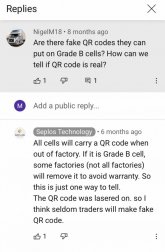Bob142
Build more, learn more.
I am working on that right now. I have 4 EVE 280s sitting unused on a shelf that I received from Craig 6 months ago that he tested out to 280Ahs per cell. Not quite a time machine, and statistically insignificant, but it's the best direct comparison I can make.I'm not sure if this forum inspired unrealistic expectations or if the cells have changed recently.
From all the reading I did around here, I expected to get 280Ah too.
To recap for those unfamiliar, I've been balancing and testing my recently acquired Basen cells in 4S packs:
- Top balancing to cell voltage of 3.65V.
- Constructing packs managed by an Overkill Solar 4S 120A BMS
- Charge current of 30A, discharge current of ~60A.
- Using a TF03K battery monitor for pack capacity measurements.
- The room has been at a consistent 68F (20C) during all charging and discharging.
- I haven't done any cell-level capacity tests as I don't think those are useful data points for me in practice.
- The three Basen packs have yielded 265Ah, 274Ah, and 274Ah in the first round of tests. (More details: balancing setup, 1st pack, 2nd pack, 3rd pack.)
- In the case of the 274Ah pack tests, my inverter shut down when it hit 11V. Only the 265Ah result was due to BMS cell level low voltage protection (2.5V).




